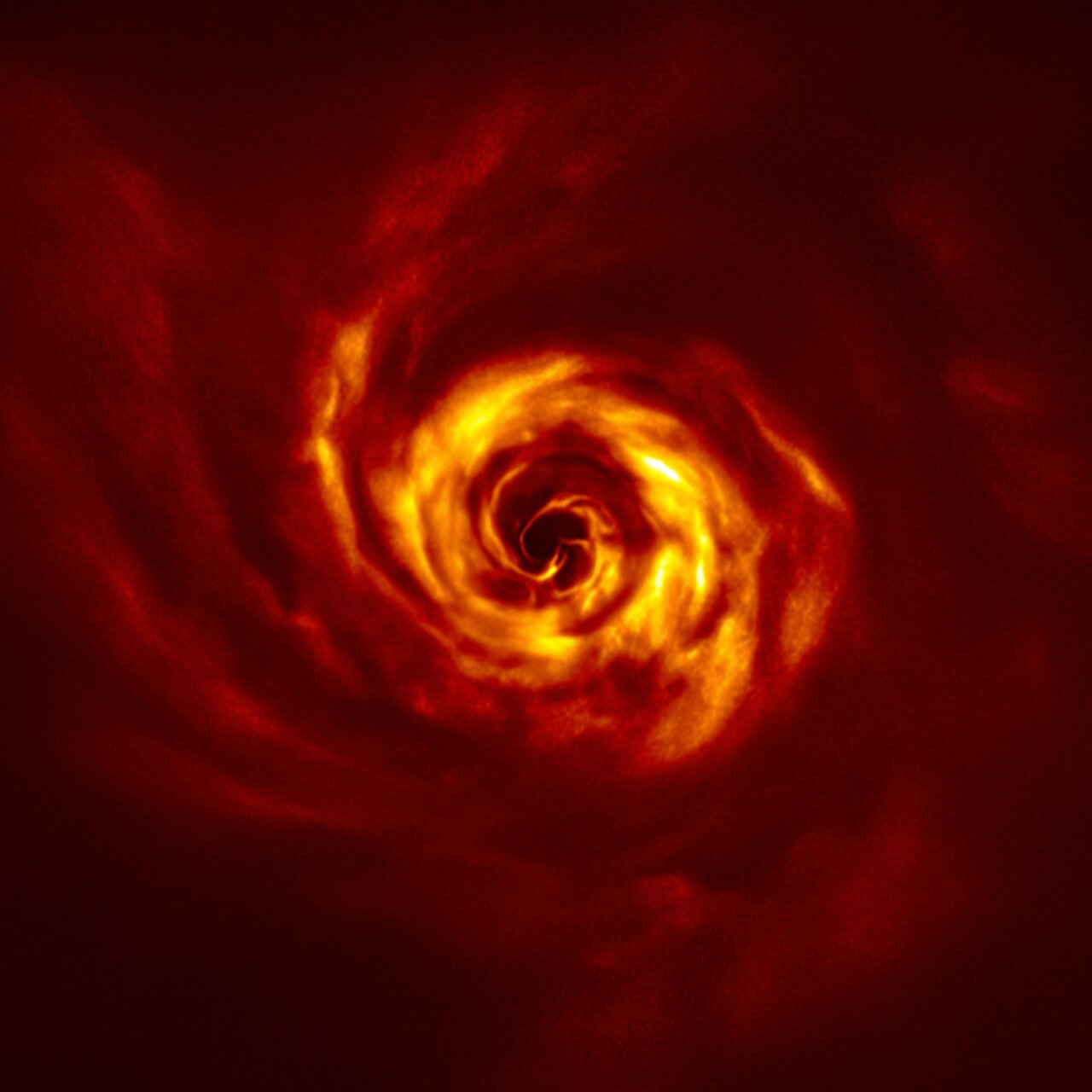This image could be the first direct evidence of a planet being born

The news: Astronomers have made what are possibly the first ever observations of a planet in the process of being born. The newly released images are of a very young star system called AB Aurigae, about 520 light-years away. They show a massive disc of swirling gas and dust. The disc features a prominent twist that could indicate where a new planet is forming. The findings were reported today in the journal Astronomy & Astrophysics.
How did they make the discovery? AB Aurigae was observed a few years ago through the Atacama Large Millimeter/submillimeter Array in Chile. Those images showed two long spirals of gas close to the star, spurring scientists to follow up with the ESO’s Very Large Telescope (also in Chile). This telescope is armed with an instrument called SPHERE, which can view faint light reflected by small dust grains and emissions originating from the star system’s inner disc.
Do the “twist”: SPHERE’s images confirmed the presence of the spirals, and also showed the twist indicating that the spiral arms are connected. It is these spirals that let other gas and dust moving through the young star system accrete onto the planet-to-be, which slowly grows into something fully formed and mature.
Deep Dive
Space
The search for extraterrestrial life is targeting Jupiter’s icy moon Europa
NASA’s Europa Clipper mission will travel to one of Jupiter's largest moons to look for evidence of conditions that could support life.
How to safely watch and photograph the total solar eclipse
The solar eclipse this Monday, April 8, will be visible to millions. Here’s how to make the most of your experience.
How scientists are using quantum squeezing to push the limits of their sensors
Fuzziness may rule the quantum realm, but it can be manipulated to our advantage.
Stay connected
Get the latest updates from
MIT Technology Review
Discover special offers, top stories, upcoming events, and more.